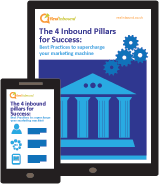No matter the level of research you put in, not every marketing campaign you come up with will yield positive results. That's where A/B testing comes in as a reliable method to calculate your business's best online marketing strategies.
A/B testing can be used to test everything starting from website copy to sales emails. That allows you to establish the best-performing version of the campaign before spending on marketing strategies that probably won't yield the results everyone is expecting. Most marketers will tell you that A/B testing is time-consuming, but the benefits you get from it is always enough to offset that time investment.
A well-planned A/B test will make such a massive difference in how effective your marketing efforts are. That said, in this article, we will share some of the easy A/B testing best practices that will help you achieve reliable results.
1. Testing the Right Items on Your Website
It's crucial that you test the right items on your website. That's the only way you can make a difference. You need to mainly optimise the pages that people visit the most, like the About page, home page, Contact page and Blog page.
Also, you can focus on the key lead generation pages such as your eBook landing pages, Webinar signup pages and lead magnet pages. Once you know the most visited pages on your website, you will have better insight into where to place the lead magnet opt-ins and email subscription forms.
2. Get the Right Sample Size
Another great A/B testing practice is getting that sample size right. Failure to perform that A/B test on enough people won't provide reliable results. A campaign that returns at least 150% more engagement is excellent. Even if you do A/B testing, too few viewers will deliver unreliable data as the test sample is too small.
To determine the ideal sample size you need, calculate the conversion rate and the percentage increase you'd want to achieve. With this data, you will know the number of visitors required for the A/B test.
3. Check the Data Reliability
When performing A/B tests, statistical significance is another vital measure of data reliability. This is what determines that your results were not caused just by random chance. You can identify your statistical significance for the A/B test by using Visual Website Optimisers.
Using these tools, type in the number of visitors you've tested in your original marketing campaign and the variation then you can calculate the significance. The results will show you the measure of reliability, and the statistical significance will be indicated by either a yes or no. If you get a yes, you are on the right track. But if it's a no, then you might have to go back to the drawing board.
4. Timing is Key for your A/B Tests
One of the best A/B testing practices is scheduling your tests. To get accurate data from your A/B tests, you need to run the tests for comparable periods. That means accounting for plateaus and seasonal peaks alike. What does this mean?
If you test your traffic over a black Friday and compare it to another regular Tuesday, you will get very unreliable results. Check with your traffic patterns, then select the ideal period for running those A/B tests.
You likely already know your high and low seasons. So, as you do your A/B tests, make sure that you compare the high seasons with other high seasons and the low seasons with other low seasons.
5. Check the Test Duration
Another crucial practice that you need to pay attention to when running your A/B test is the test duration. The duration is vital in determining the reliability of the results you get. When you are testing different variants and want higher conversions, you will have to test for a longer time than when you are testing for just a single variant.
6. Ensure You get the Hypothesis Right
You can't start testing anything without a solid hypothesis; otherwise, you will be just wasting time. The hypothesis explains precisely what you must test and why you need to test that specific element. Also, you need to highlight the changes you expect to see after the test. This kind of structure will make it easier for you to determine whether the test succeeds or fails. Without a hypothesis, what you are doing is just guesswork.
7. Avoid Making Mid-Test Changes
When you are doing the A/B tests, you can easily get carried away by the results that you want to rush out and implement even more changes. Don't do it!
Interrupting the A/B test halfway before the testing period is complete or introducing new elements to the test will interfere with the reliability of the test. That's because you will have no idea if the changes you made are responsible for the lift in your conversions or just the initial strategy you had put in place.
8. Test One Thing at a Time
The golden rule of AB testing is that you need to test one element at a time. For instance, in a situation where you have to test an opt-in marketing form, you need to test for changes in the call to action, headline or number of fields on the form. Make sure you do one thing at a time. That's the only way to identify which element makes a difference in your conversion rate.
9. Don't Go Overboard with the Variations
It's easy to get a little too excited with the A/B tests but always make sure you don't test too many variations at once. As we mentioned earlier, the more variations you have, the longer it will take to run the tests and get reliable results. The best A/B testing practice is testing only 2-4 variations at once. That gives you the ideal balance of the test duration and efficiency.
10. Test More Often
Finally, it's crucial that you run the A/B tests more often. With enough data from your original marketing campaigns, you can use the A/B tests to achieve better results. Eventually, you will see incremental changes in the conversion rate.
In Summary
As a marketer, A/B testing is your best friend. This tool helps you identify which ads are likely to drive more conversions, the offers your audience responds to and which blog headlines are likely to drive more traffic. As you get started with A/B testing today, remember to incorporate the best practices discussed in this article.







